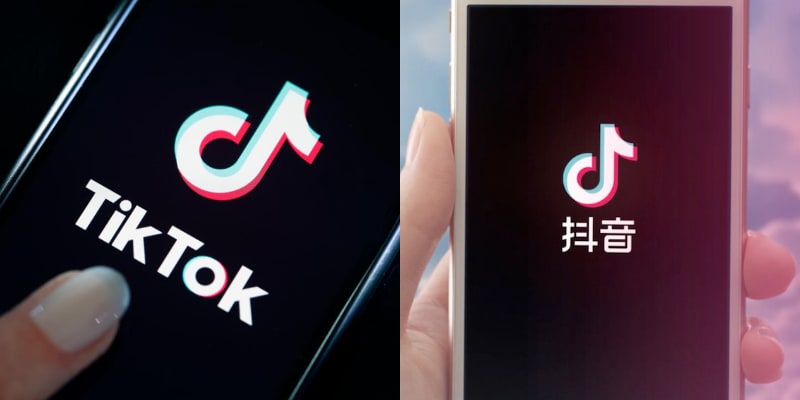JD.com Announces Renewed Strategic Cooperation With Tencent
Tencent will keep providing JD.com with main entry points on its WeChat platform in order to maintain traffic. It also includes collaboration in areas like membership services, marketing and advertising, technology services, and communications.
The deal will carry out business cooperation in the areas of e-commerce portals, cloud technology and cloud services, membership systems, online conferences, enterprise services, smart retail and advertising, supply chain, and other areas. It will also strengthen technical exchanges and cooperation in artificial intelligence and other fields.
JD.com and Tencent are collaborating strategically for the third time at this time. The contract is extended for another three years.
Link: https://pandaily.com/jd-com-announces-renewed-strategic-cooperation-with-tencent/
Navigating Douyin — A Guide For Luxury
The mainland’s TikTok has already solidified its position in the market despite just having launched its e-marketplace in June 2020; it is currently ranked among the top five e-commerce applications with the greatest market shares.
600 million DAUs are on Douyin. The innovative consumer journey that Douyin delivers is what makes it so intriguing since it is completely changing the e-tail landscape. By connecting interest to final transactions, the software completes the cycle.
Link: https://jingdaily.com/douyin-guide-for-luxury/
Head & Shoulders Father’s Day Campaign Taps Into Paternal Pathos
Despite the fact that Father’s Day is not a recognised holiday in mainland China, it is nonetheless observed there in accordance with Western custom. On this day, the majority of Chinese advertisements are usually more sentimental than those in the West and focus on father-child connections. That said, it is remarkable how the Head & Shoulders commercial managed to stir up laughter in its viewers while also bringing them to tears.
For this very reason, family marketing is a common motif in Chinese ads. The good or service could be marketed to the whole family as a shared activity that is consumed together.
This video promo is not only directed at men who lose their hair but also at kids of all ages who value their father figures. In reality, sons and daughters wrote the majority of the posts under the Weibo hashtag #Dadsloveistoobald, which received an astounding 10 million views.
Link: https://daoinsights.com/works/head-shoulders-fathers-day-campaign-taps-into-paternal-pathos/
Weibo to Launch New Interest-Driven Social App
Several reports claim that Planet, a new interest-based social app, will be released by Weibo. An improved version of Planet Video, which already includes millions of communities covering a variety of themes, is the new app. Importantly, it will primarily serve as a tool for Weibo users to follow famous people and influencers while immersing themselves in groups of people who share their interests.
At the moment, Planet Video is divided into five categories: Home, Discover, Shoot, News, and My. The app immediately demonstrates Weibo’s interest in short video content. The move comes as no surprise given China’s tremendous demand for live streaming and brief video content.
On the other hand, some social circles may view the affiliation with a platform that promotes fan interaction and celebrity culture as disrespectful of the government’s efforts to curtail “excessive fan culture.” As a result, the luxury brands associated with Planet may find themselves in a sticky situation, dealing with criticism and reputational issues.
Link: https://jingdaily.com/weibo-planet-app-celebrities-short-video/
China’s All-Purpose Wechat App Lets Users Register Two Accounts With One Phone Number In Pilot Test
Tencent Holdings’ all-purpose social media platform WeChat is currently pilot testing a feature that enables users to sign up for an additional account using their existing mobile number. This could make it easier for users to balance their use of the app between their personal and professional lives.
According to a report by Chinese media outlet Thepaper.cn, the new capability has been in experimental testing with a small group of users since last year, and it is unclear if or when it will be formally released.
Some welcomed the move as a way to better separate work and life, while others were not impressed. However, some complained that the two accounts cannot work concurrently and they could miss the message on the main account when switching to the other one.
WeChat Service Marketing
The service market is an official platform to help find cooperation. At present, millions of companies are looking for small program development, customer service and other high-quality services here.
In the article, the marketing managers of two companies recommended this platform. They said that after they applied to join this platform, they signed a lot of customer resources and got a lot of cooperation service providers who meet the following standards to enter the service market-content service area:
- It must be an independent corporate legal person, with fixed office space, and be qualified as a general taxpayer;
- Has been registered and operated for more than 1 year;
- The business scope should include: Daren, celebrity, self-media and other related businesses, providing market planning and publicity services, providing supply chain or e-commerce agency operations, etc., and engaging in related businesses for more than half a year;
- The registered capital is more than 500,000 yuan;
He has experience in providing live broadcasts, short videos, and graphic operations for merchants in the WeChat ecosystem. One of the following conditions is met:
- Sign a real and effective live broadcast operation business contract with at least 3 or more mini-program merchants, the live broadcast cooperation relationship can be checked, and the live broadcast comprehensive data performance during the service period is good;
- Possess an agency operation business contract based on short videos and pictures and texts signed with more than 3 merchants in the WeChat ecosystem.
- If neither of ① and ② is available, it is necessary to prove other materials that can prove the serviceability in the WeChat content service field.


